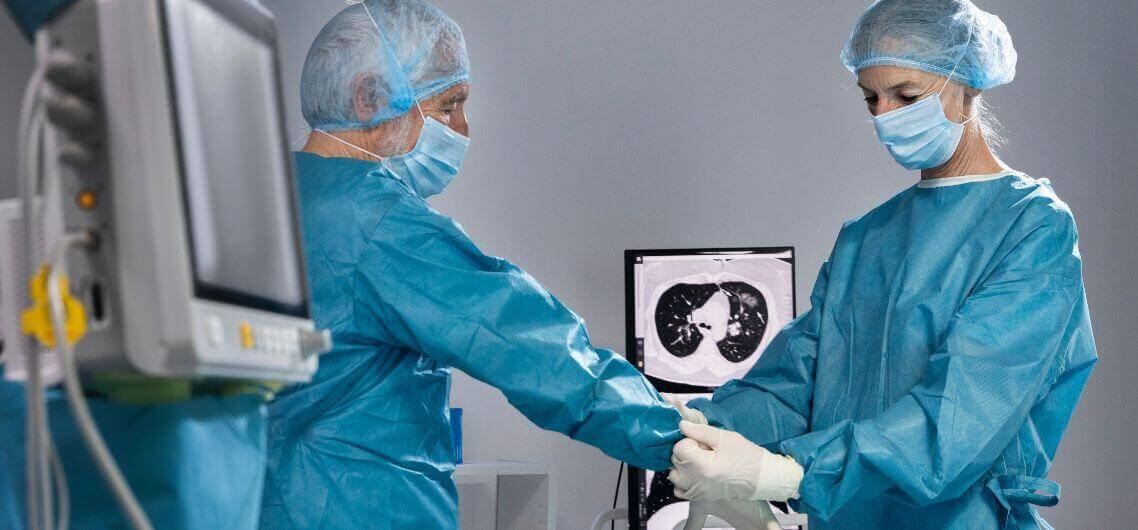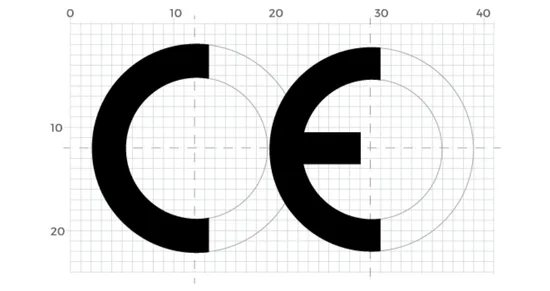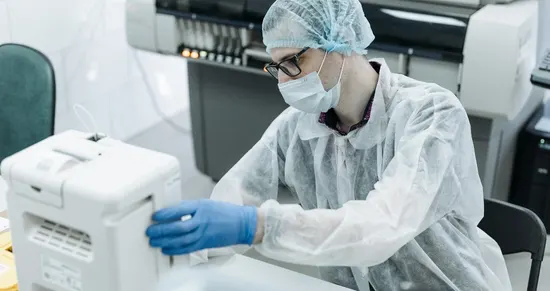What is IVD?
In Vitro Diagnostic medical devices are type of devices used to perform testing on biological samples like blood, urine and tissues; to obtain diagnostic information.
They play a crucial role in providing essential information on diagnosis, treatment and monitoring of various conditions.
These products are designed to help with collecting, preparing, and testing samples from the human body.
Classification and Regulatory Changes
Annex VIII of the EU In Vitro Diagnostic Medical Device Regulation (IVDR) 2017/746 provides a comprehensive framework for the classification of IVD devices. This framework outlines the classification rules that manufacturers must follow to categorize their products and ensure compliance with the regulatory requirements. The classification system divides IVD devices into four distinct classes based on their risk levels, as detailed below:
- CLASS A
Description: Class A devices represent the lowest risk category. These include items such as general laboratory reagents, instruments and basic sample collection tubes.
Regulatory Requirements: Devices in this category are subject to the fundamental requirements of the IVDR, focusing on general safety and performance standards. These devices are usually self-certified by the manufacturer.
- CLASS A(STERILE)
A specific category in Class A IVD devices also known as Sterile devices pose a minimal risk level. They include devices such as specimen receptacles, sterile blood collection tubes, etc.
- CLASS B
Description: Devices classified as Class B have a moderate risk level. Examples include self-testing Pregnancy kits used to detect hCG hormone in women for detection of pregnancy or unassayed controls with unspecified quantitative or qualitative values.
Regulatory Requirements: These devices undergo a more rigorous assessment process, which includes a conformity evaluation by a Notified Body (NB) to ensure that they meet the necessary safety and performance standards.
- CLASS C
Description: Class C devices involve higher risks and include those used for critical diagnostics, such as Sexually Transmitted Infection (STI) diseases, Genetic testing devices used for detection of genetic mutation diseases like Sickle cell anemia, Self-testing devices for detection for glucose in blood.
Regulatory Requirements: Devices in this class require a comprehensive assessment and must be evaluated by a Notified Body (NB) to verify their compliance with detailed safety and performance criteria.
- CLASS D
Description: Class D devices represent the highest risk category. This includes devices designed to detect highly transmissible agents responsible for life-threatening diseases like HIV with significant or suspected high risk of spread.
Regulatory Requirements: These devices are subject to the most stringent regulatory scrutiny, including a thorough assessment and certification by a Notified Body (NB) to ensure the highest standards of safety and efficacy.
Reclassification of Existing Devices
The IVDR also introduces provisions for the reclassification of existing IVD devices. Manufacturers may need to reevaluate and adjust the classification of their devices in accordance with the updated rules and requirements set forth by the IVDR and as per MDCG 2020-16 rev. 3 guideline. This process ensures that devices are aligned with the latest regulatory standards and risk classifications.
Submission and content of technical documentation
Submission and Content of Technical Documentation for IVDR as per EU IVDR 2017/746
The European Union In Vitro Diagnostic Medical Devices Regulation (IVDR) 2017/746 mandates that manufacturers of IVD devices submit comprehensive technical documentation to demonstrate compliance with the regulation. This documentation serves as a basis for conformity assessment and market authorization.
Submission Requirements
- Notified Body Assessment: For Class A (Sterile), Class B, C and D IVD devices, manufacturers must submit their technical documentation to a notified body for conformity assessment. The notified body will review the documentation to ensure compliance with the IVDR and issue a certificate of conformity if appropriate.
- Self-Declaration: Manufacturers of Class A especially non-sterile IVD devices may self- declare conformity. However, they still need to prepare and keep technical documentation to show they meet the requirements of IVDR.
Content of Technical Documentation
The technical documentation must include the following information:
- Device description and specification, including variants and accessories (Regulation (EU) 2017/746 (IVDR), Annex II Section 1)
- Information supplied by the manufacturer (Regulation (EU) 2017/746 (IVDR), Annex II Section 2)
- Design and manufacturing information (Regulation (EU) 2017/746 (IVDR), Annex II Section 3)
- General Safety and Performance Requirements (Regulation (EU) 2017/746 (IVDR), Annex II Section 4)
- Benefit-Risk Analysis and Risk Management (Regulation (EU) 2017/746 (IVDR), Annex II Section 5)
- Product Verification and Validation (Regulation (EU) 2017/746 (IVDR), Annex II Section 6)
- Post-Market Surveillance (REGULATION (EU) 2017/746 (IVDR), Annex III)
- EU Declaration of Conformity (REGULATION (EU) 2017/746 (IVDR), Annex IV)
- Administrative Information
The specific content requirements for technical documentation may vary depending on the classification of the device as well as per specific NB requirements. For example, Class C and D devices will require more extensive performance requirements than Class A and B devices.
By ensuring that their technical documentation meets the requirements of the EU IVDR, manufacturers can help to protect patient safety and facilitate the timely and efficient market authorization of their IVD devices.
Additional Requirements
Verification of performance
The EU IVDR requires that performance studies for medical devices are conducted safely, ethically, and under realistic conditions to ensure the device’s effectiveness and safety for both user and patients.
The IVDR has significantly increased regulatory oversight for IVDs in the EU. To ensure device safety and efficacy, manufacturers must conduct rigorous performance studies.
Key Requirements:
- Scientific Validity, Analytical Performance, and Clinical Performance: These are the core elements to be demonstrated.
- Regulatory Framework: Articles 57-77 and Annex XIII of the IVDR provide specific guidelines.
- Comprehensive Plan: Manufacturers must submit a detailed plan outlining the study’s objectives, methodology, and analysis.
- Performance Assessment: The study should evaluate accuracy, sensitivity, specificity, predictive values, and overall quality.
Performance studies are crucial for ensuring the safety and efficacy of IVDs. By adhering to the IVDR and international standards, manufacturers can successfully navigate the regulatory landscape and bring innovative products to market.
Summary of Safety and Performance (SSP)
Under the European Union In Vitro Diagnostic Regulation (IVDR) 2017/746, certain requirements are established for the documentation of class C and D in vitro diagnostic (IVD) devices. A key requirement is the development of the Summary of Safety and Performance (SSP). The SSP serves as a critical component in ensuring transparency about the safety and performance of these devices and provides accessible information for the general public.
Purpose and Content of the SSP
The SSP is designed to communicate essential information about an IVD device in a format that is clear and understandable to both the intended users and, where relevant, patients. It aims to provide an overview of the device’s performance and safety, as well as information about alternative therapeutic options, if applicable. The SSP is a public document and does not replace the Instructions for Use (IFU), which remains the primary resource for safe device operation and detailed usage instructions.
Development and Submission Process
As part of the technical documentation process, manufacturers need to create a draft SSP. This draft is submitted to a Notified Body (NB) for review. The NB’s role is to verify that the SSP adheres to the guidelines outlined in MDCG 2022-9 and complies with Article 29 of the EU IVDR. The review process ensures that the SSP contains all necessary information and accurately reflects the technical documentation.
Once validated and approved by the Notified Body, the SSP is uploaded to EUDAMED, the European database for medical devices. This public accessibility is intended to provide transparency and facilitate informed decisions by users and patients.
Document Format and Submission
- Manufacturer must submit all the technical documents in English language.
- All the documents submitted by the manufacturer to NB should be in a non-editable format.
- Documents should be bookmarked to ensure ease of navigation.
- Signatures are mandatory on each Technical document on the approval as well as revision history section.
Submission of Technical File
The submission of Technical File to a Notified Body for assessment involves several steps:
- I: Filling of Quotation form by the manufacturer for application for IVD.
- II: Acceptance of Quotation form by NB.
- III: Sending of Quotation to the manufacturer by the Notified Body based on the device type and class.
- IV: Filling of application of conformity assessment of IVD
- V: Agreement for conformity assessment between the manufacturer and the NB
- VI: Appointment of a NB team for assessment of technical documentation
- VII: Submission of Technical document to NB
- VIII: Review of conformity assessment of IVD
- IX: Decision on conformity assessment of IVD
References






